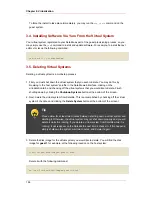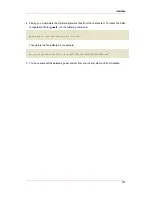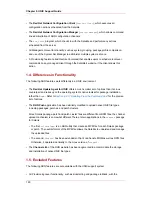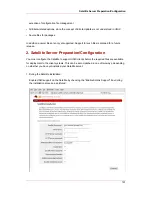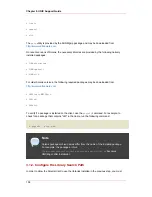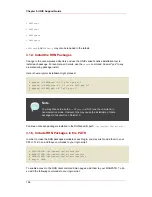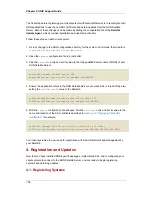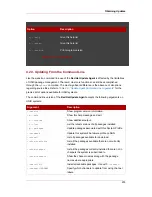
This section describes the RHN registration process for UNIX systems. You must use the
rhnreg_ks
command to accomplish this; the use of activation keys for registering your systems
is optional. These keys allow you to predetermine settings within RHN, such as base channels
and system groups, and to apply those automatically to systems during their registration.
Since activation key generation and use is covered extensively in other chapters, this section
focuses on differences when applying them to UNIX variants. Refer to
Section 4.6.1, “Managing
Activation Keys”
for full descriptions of this process.
To register UNIX systems with your RHN Satellite Server, accomplish the following tasks in this
order:
1. Log into the Satellite's web interface and click the Systems tab in the top navigation bar
followed by Activation Keys in the left navigation bar. Then click the create new key link at
the top-right corner of the page.
2. On the following page, select the base channel you created at the end of
Section 2, “Satellite
Server Preparation/Configuration”
.
3. After creating the key, click its name in the Activation Keys list to enhance its RHN settings
by associating software and configuration channels and system groups.
4. Open a terminal on the client system to be registered and switch user to root.
5. Use
rhnreg_ks
along with the
--activationkey
option to register the client with the
Satellite. The string of characters that make up the key may be copied directly from the
Activation Keys list on the website. The resulting command will look something like the
following:
rhnreg_ks --activationkey=b25fef0966659314ef9156786bd9f3af
6. Go back to the website, click the name of the activation key, and ensure the new system
appears within the Activated Systems tab.
4.2. Obtaining Updates
Package updates in UNIX are handled much differently than in Linux. For instance, Solaris
relies on Patch Clusters to update multiple packages at once, while Red Hat operating systems
use Errata Updates to associate upgrades with specific packages. In addition, Solaris uses
answer files to automate interactive package installations, something Linux doesn't understand,
while Red Hat offers the concept of source packages. For this reason, this section seeks to
highlight differences in using RHN tools on UNIX systems. (Note: RHN does not support Solaris
answer files in the current release; such support is planned for future releases.)
Despite inherent differences, such as the lack of Errata, the channel and package management
interfaces within the RHN website on the Satellite work largely the same for UNIX systems. All
Obtaining Updates
199
Summary of Contents for NETWORK SATELLITE 5.1.0 - CHANNEL MANAGEMENT
Page 1: ...Red Hat Network Satellite Reference Guide 5 1 0 5 1 ISBN Publication date ...
Page 2: ...Red Hat Network Satellite ...
Page 4: ...Red Hat Network Satellite ...
Page 12: ...xii ...
Page 22: ...8 ...
Page 35: ...Figure 2 11 Available Package Updates Available Package Updates 21 ...
Page 52: ...38 ...
Page 74: ...Figure 5 15 Text Mode Welcome Screen Chapter 5 Red Hat Network Registration Client 60 ...
Page 176: ...162 ...
Page 202: ...188 ...
Page 220: ...206 ...
Page 300: ...Your Preferences 71 Index 286 ...


